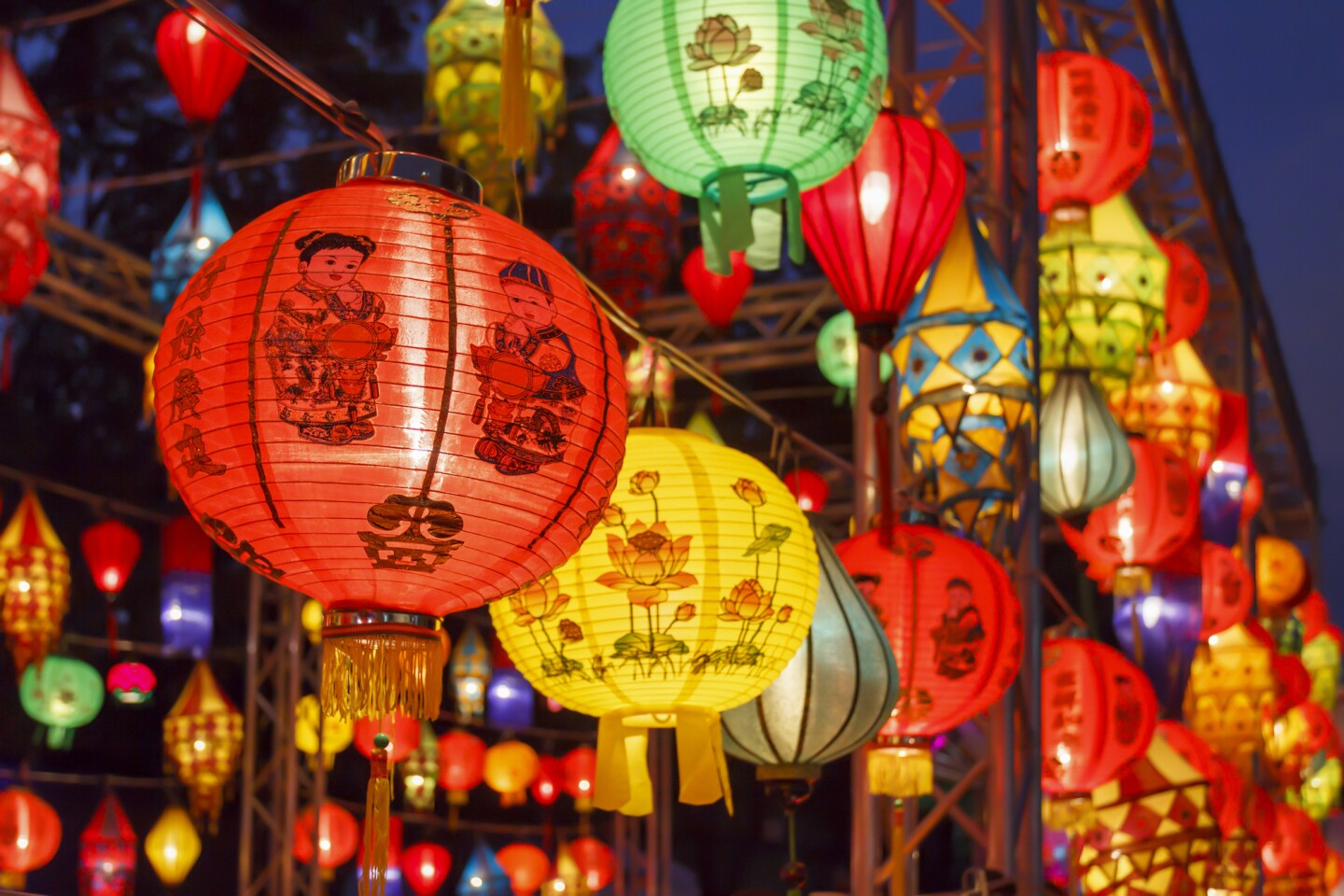Lantern Festival Traditions: A Cultural Tapestry of Light and Celebration
2024/02/21

Due to the custom of admiring lanterns on the Lantern Festival, it is also called the "Lantern Festival" or "Lantern Evening." During the Eastern Han Dynasty, Emperor Ming of Han promoted Buddhism and decreed to "light lanterns to honor the Buddha" on the night of the Yuanxiao Festival. He personally went to temples to hang lanterns to show reverence to the Buddha. Since then, the tradition of hanging lanterns during the Lantern Festival has become popular and passed down through generations.
Generally, the custom begins with hanging lanterns in various styles on the market from the 13th day of the first lunar month. The 14th day is for "trial lighting," where various structures like lantern pavilions, decorative arches, etc., are built, lanterns are hung, fireworks are set off, and performances are held, marking the beginning of festive activities. The 15th day, known as "official lighting," sees various performances starting in full swing. Not only are there activities such as lantern competitions at lantern fairs, but also ordinary households hang lanterns, and children carry lanterns to play everywhere, with some places continuing until the 18th day for "falling lanterns."
The main attraction of Lantern Festival celebrations is the lanterns, also called "colorful lanterns" or "lanterns." Lanterns are exquisite art forms created by the ancient Chinese people. Colored lanterns existed as early as the Western Han Dynasty, and after thousands of years of development and innovation by skilled craftsmen, lantern art flourished with various styles. There are hanging lanterns with tassels, beautiful table lanterns, elegant wall lanterns, delicate handheld lanterns, and exquisite revolving lanterns, among others. The bright moon in the sky and the lanterns on earth complement each other, demonstrating the joy and festivity of the festival.
Guessing lantern riddles: Profound and broad
"Lantern riddle guessing," also known as "riddle guessing," is an activity of the Lantern Festival that appeared in the Song Dynasty. During the Southern Song Dynasty, the capital Lin'an was filled with people making and guessing riddles every Lantern Festival. Initially, enthusiasts would write riddles on pieces of paper and stick them on colorful lanterns for people to guess. Because riddles can enlighten wisdom and are interesting, they have been loved by people for thousands of years, forming a unique folk culture.
Lantern riddles may relate to characters or contain wisdom, often humorous and highly relevant. In the process of guessing, people can not only appreciate the charm of traditional culture but also improve their own wisdom.
Eating yuanxiao: Reunion
Eating yuanxiao is an important custom of the Lantern Festival. Eating yuanxiao on the fifteenth day of the first lunar month became fashionable during the Ming and Qing Dynasties. In the Ming Dynasty, the capital city began eating yuanxiao after the ninth day. Yuanxiao, made of glutinous rice flour, is round and filled with fillings such as walnuts, sesame, or sweet osmanthus sugar. It is called "tangtuan" in Jiangnan, "yuanzi" by people in Suzhou, and "Shangdeng yuanzi" by people in Hangzhou. After worshipping ancestors, family members and villagers enjoy yuanxiao together, symbolizing reunion and auspiciousness. In contemporary China, eating yuanxiao on the fifteenth day of the first lunar month has become fashionable. With the bright moon in the sky and yuanxiao in the bowl, it symbolizes reunion and good luck. Eating yuanxiao expresses people's enjoyment of family reunion.
In many places, there is a popular activity called "shaking yuanxiao." The prepared filling is placed on dry flour in a large basket, shaken to coat with flour, sprinkled with water, shaken again, and rolled bigger and bigger until it takes shape. The process of shaking yuanxiao is also a display of folk customs, adding to the festive atmosphere of the Lantern Festival.
Playing with dragon lanterns and lion dances
"Playing with dragon lanterns," also known as "dragon dance," or "dragon lantern dance," is a unique traditional folk entertainment activity in China. "Playing with dragon lanterns" was quite common among the people during the Han Dynasty. By the Tang and Song Dynasties, "dragon dances" were already common forms of performance in "shehuo" and "wu teams." The performances of "playing with dragon lanterns" include "solo dragon playing with pearls" and "double dragons playing with pearls." The styles vary from place to place, each with its unique characteristics.
The custom of folk lion dances originated in the Three Kingdoms period and became popular during the Southern and Northern Dynasties, lasting for more than a thousand years. The lion, known as the king of beasts, is majestic and gives people a sense of dignity and bravery. Ancient people regarded it as a symbol of courage and strength, believing that it could drive away evil spirits and bless people and animals with safety. Therefore, people gradually formed the custom of performing lion dances during the Lantern Festival and other major events to pray for auspiciousness and peace in life.
Stilt walking and dry-land boat rowing
Stilt walking is a popular mass technical performance in folk. Stilt walking was one of the hundred shows in ancient China, appearing as early as the Spring and Autumn Period.
Dry-land boat rowing is said to commemorate the achievements of Yu the Great in water management. The dry-land boat is not a real boat, mostly made of two thin boards sawed into the shape of a boat, tied with bamboo and wood, covered with colored cloth, and tied around the waist of the girl, making her look like she is sitting in a boat. Holding oars in her hands and imitating the rowing posture, she runs and sings local tunes, singing and dancing along the way. This is dry-land boat rowing.
Door and household offerings, "walking away from a hundred diseases"
In ancient times, there were "seven offerings," of which door and household offerings were two. The method of offering sacrifices was to insert willow branches above the door, put a pair of chopsticks in a bowl of bean porridge, or place wine and meat in front of the door.
"Walking away from a hundred diseases," also known as "walking away from diseases," "dispelling diseases," "baking diseases," and "walking over bridges," is an activity to ward off disasters and pray for health. Women go out together for a walk on the night of the Lantern Festival, walking together and crossing bridges, believing that this can dispel diseases and prolong life. "Walking away from a hundred diseases" is a folk custom since the Ming and Qing Dynasties, some happening on the fifteenth day, but mostly on the sixteenth day. On this day, women dress up in festive costumes, gather in groups, walk out of their homes, cross bridges, climb city walls, touch nails to pray for offspring, and return only after midnight.





